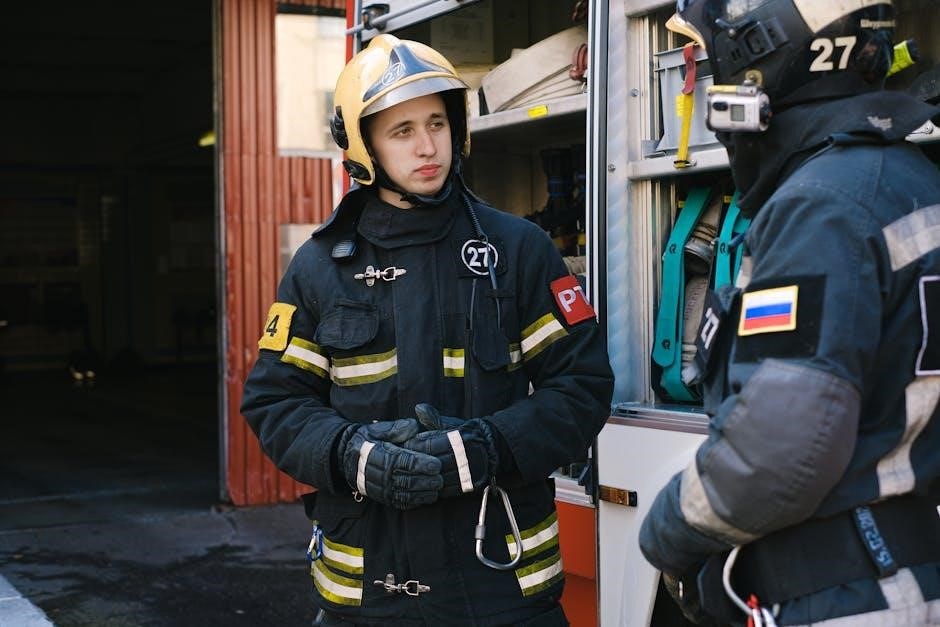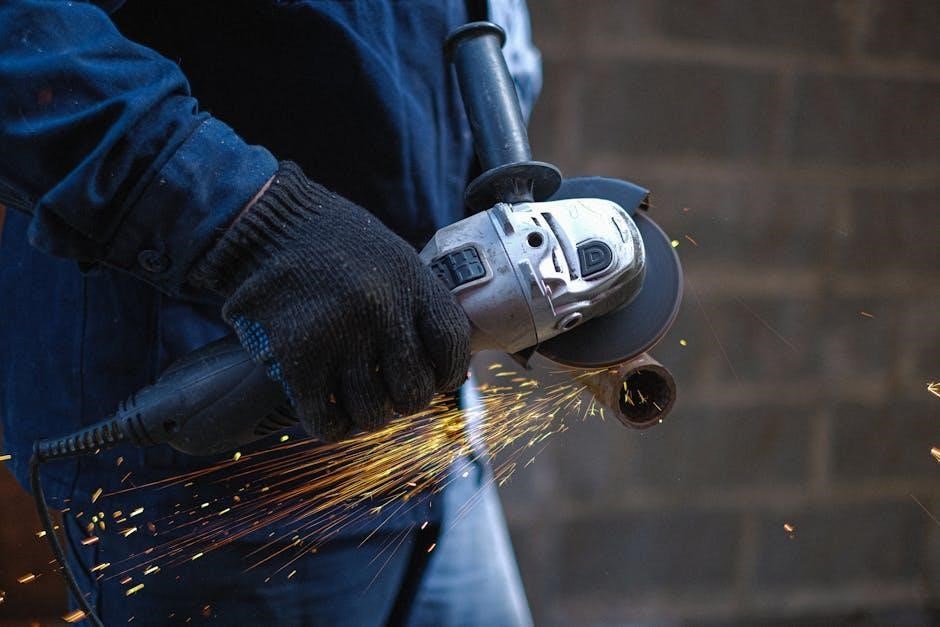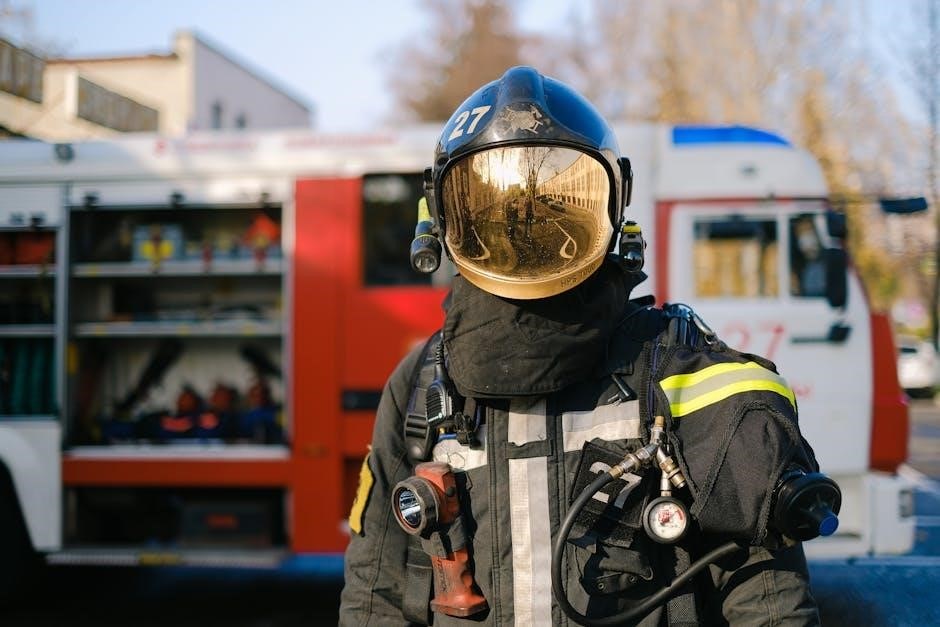NFPA 285 is a standard fire test method evaluating exterior wall assemblies with combustible components, ensuring fire safety in non-combustible construction. It is administered by the National Fire Protection Association.
1.1 Overview of the Standard
NFPA 285 is a standard fire test method designed to evaluate the fire propagation characteristics of exterior wall assemblies containing combustible components. It ensures fire safety in non-combustible construction types, such as commercial and high-rise buildings. The standard specifically addresses materials like foam plastics and provides a means to measure flame spread resistance when exposed to interior fires. Compliance with NFPA 285 is often mandated by building codes, including the International Building Code (IBC), to protect against fire hazards in modern construction.
1.2 Importance of NFPA 285 in Fire Safety
NFPA 285 plays a critical role in fire safety by preventing the spread of fire through exterior wall assemblies with combustible components. It ensures that materials used in construction meet rigorous safety standards, protecting occupants and property from fire hazards. Compliance with NFPA 285 is essential for maintaining fire safety in high-rise and commercial buildings, aligning with broader fire protection goals and building codes like the IBC and NFPA 101.

Scope and Application of NFPA 285
NFPA 285 evaluates exterior wall assemblies with combustible components, ensuring they meet fire safety requirements for non-combustible buildings, preventing fire spread and protecting occupants. Vital for modern construction.
2.1 Exterior Wall Assemblies Covered by the Standard
NFPA 285 applies to exterior wall assemblies containing combustible components, such as foam plastics, insulated concrete forms, or other materials. These assemblies are covered with non-combustible finishes like brick, concrete, stucco, or steel, meeting specific thickness requirements. They must be tested as part of the wall assembly to ensure compliance with fire performance criteria for non-combustible construction, preventing fire spread and ensuring occupant safety.
2.2 Types of Combustible Components Evaluated
NFPA 285 evaluates exterior wall assemblies containing combustible materials like foam plastics, insulated concrete forms, and fire-retardant-treated wood. These components are tested for fire propagation when covered with non-combustible finishes such as brick, concrete, or steel. The standard ensures these materials meet fire performance criteria, preventing rapid flame spread and maintaining structural integrity during fires.
Test Methodology
NFPA 285 evaluates fire propagation characteristics of exterior wall assemblies through full-scale testing, measuring flame spread and heat release when exposed to interior fire conditions.
3.1 Setup and Procedures for Conducting the Test
The test involves assembling a full-scale exterior wall specimen, including combustible components, and mounting it in a testing apparatus. Ignition sources simulate interior flashover conditions. Thermocouples measure temperature progression across the assembly. High-temperature furnaces or gas burners apply heat to replicate fire exposure. The setup ensures uniform testing conditions, with documentation capturing flame spread, heat flux, and material degradation over time.
3.2 Instrumentation and Documentation Requirements
Instrumentation includes thermocouples, heat flux sensors, and cameras to monitor temperature, flame spread, and material behavior. Data collection systems record test parameters in real-time. Documentation must include detailed test setup, material specifications, and observations. Calibration records for sensors and equipment are required. A comprehensive final report summarizes results, ensuring transparency and compliance with NFPA 285 standards.
Materials and Components
NFPA 285 evaluates exterior wall assemblies containing combustible materials like foam plastics and insulation. Non-combustible coverings, such as brick and concrete, are tested with specific thickness requirements.
4.1 Combustible Materials Tested Under NFPA 285
NFPA 285 evaluates combustible materials such as foam plastics, insulation, and fire-retardant-treated wood (FRTW). These materials are tested as part of exterior wall assemblies, often covered with non-combustible finishes like steel, stucco, or concrete. The standard ensures these components meet fire performance criteria, focusing on flame spread resistance and fire propagation characteristics when exposed to interior fires.
4.2 Non-Combustible Coverings and Their Thickness Requirements
NFPA 285 specifies non-combustible coverings such as brick, concrete, stone, stucco, and steel, with defined thickness requirements. For example, brick must be at least 2.625 inches thick, while stucco ranges from 0.375 to 0.875 inches. These coverings ensure exterior wall assemblies meet fire performance criteria, preventing flame spread and fire propagation when combustible components are present.

Compliance and Certification
Compliance with NFPA 285 requires testing by approved laboratories, ensuring materials meet fire safety criteria. Manufacturers must provide detailed documentation and adhere to instrumentation requirements for certification.
5.1 Requirements for Passing the NFPA 285 Test
Passing the NFPA 285 test requires exterior wall assemblies to limit flame spread and fire propagation within specified limits. The test evaluates temperature rise, smoke production, and whether the fire spreads beyond the test apparatus within 30 minutes. Assemblies must resist fire penetration and minimize lateral spread. Testing is conducted by accredited laboratories, with detailed documentation provided by manufacturers to demonstrate compliance and obtain certification.
5.2 Role of Testing Laboratories and Manufacturers
Testing laboratories conduct NFPA 285 tests, ensuring compliance with fire safety standards. Manufacturers prepare test specimens and provide documentation, while laboratories perform independent evaluations. Manufacturers must demonstrate materials meet criteria, and laboratories verify results. This collaboration ensures accurate certification, maintaining the integrity of the standard and promoting fire safety in construction. Both roles are critical for reliable compliance outcomes.
Annexes and Extensions
The annexes of NFPA 285 provide extensions for test results to modified wall assemblies, addressing material or configuration changes while maintaining fire performance standards.
6.1 Extending Test Results to Modified Wall Assemblies
NFPA 285’s annex allows test results to be extended to modified wall assemblies with changes in materials, components, or configurations. This ensures fire performance remains consistent while accommodating design variations. The annex provides guidelines for documenting modifications and verifying equivalency, enabling manufacturers and designers to adapt assemblies without repeat testing. This flexibility supports innovation while maintaining safety standards.
6.2 Updates and Revisions in the Standard
NFPA 285 undergoes periodic updates to reflect advancements in materials and fire safety knowledge. Revisions include new test criteria, documentation requirements, and guidelines for emerging wall systems. Temporary Interim Amendments (TIAs) address urgent changes, while errata correct technical inaccuracies. Users must consult the NFPA website for the latest versions and amendments to ensure compliance with current standards and safety practices.

Historical Background
NFPA 285 originated during the 1970s energy crisis, proposed by the plastics industry to use foam plastic insulation. It aimed to address fire safety concerns in exterior wall assemblies with combustible materials, establishing a standardized test method to ensure fire propagation resistance in non-combustible construction.
7.1 Origins of NFPA 285
NFPA 285 traces its origins to the 1970s energy crisis, when the plastics industry proposed using foam plastic insulation in buildings. This led to concerns about fire safety in exterior wall assemblies with combustible components. The standard was developed to address these risks, providing a test method to evaluate fire propagation characteristics and ensure safer construction practices. It has since evolved to meet modern building challenges.
7.2 Evolution of the Standard Over Time
NFPA 285 has evolved through periodic updates to address industry advancements and safety needs. Revisions include expanded criteria for new materials, improved test documentation, and enhanced instrumentation requirements. The standard now incorporates updated diagrams for thermocouple placements and clarifies procedures for evaluating modified wall assemblies. These changes ensure the standard remains aligned with modern construction practices and fire safety demands.
Challenges and Considerations
Design challenges include balancing fire safety with modern aesthetics, while material selections must meet stringent criteria without compromising structural or visual requirements.
8.1 Design and Material Challenges in Meeting NFPA 285
One of the primary challenges in meeting NFPA 285 is selecting materials that balance fire resistance with design aesthetics and structural integrity. Foam plastics and fire-retardant-treated wood require careful specification to ensure compliance. Additionally, the use of combustible components in non-combustible constructions demands precise engineering to maintain safety without compromising modern architectural trends. Testing laboratories and manufacturers play a crucial role in verifying material performance, ensuring adherence to the standard’s stringent criteria.
8.2 Balancing Fire Safety with Modern Building Design
Modern architecture often prioritizes aesthetics and energy efficiency, which can conflict with fire safety requirements. NFPA 285 addresses this by providing a framework to evaluate combustible materials in exterior walls while maintaining design flexibility. Architects and engineers must balance innovative design elements with fire-resistant materials, ensuring compliance without sacrificing visual appeal or structural performance. This balance is critical for achieving both safety and architectural goals in contemporary construction.

Applications in Building Codes
NFPA 285 is integrated into local and international building codes, ensuring fire safety compliance in constructions with combustible components, and is widely adopted for exterior wall assemblies.
9.1 Integration of NFPA 285 into Local and International Codes
NFPA 285 is widely recognized and integrated into various local and international building codes, ensuring fire safety compliance for exterior wall assemblies with combustible components. Its adoption spans multiple jurisdictions, harmonizing construction standards globally and addressing fire propagation risks effectively in diverse regulatory environments.
9.2 Case Studies of NFPA 285 Compliance in Construction
Real-world applications demonstrate NFPA 285’s effectiveness in ensuring fire safety. For instance, high-rise buildings with combustible exterior wall components have successfully passed NFPA 285 tests, maintaining structural integrity during fires. Such case studies highlight the standard’s practical implementation, guiding architects and builders in achieving compliance while preserving aesthetic and functional design goals in modern construction projects.
NFPA 285 plays a vital role in modern fire protection, ensuring safe construction practices. Its guidelines promote fire safety while adapting to evolving building design and material innovations.
10.1 Significance of NFPA 285 in Modern Fire Protection
NFPA 285 is crucial for ensuring fire safety in modern construction, particularly in non-combustible buildings with combustible components. It provides a standardized method to evaluate fire propagation, ensuring materials and assemblies meet safety requirements. This standard is essential for architects, builders, and regulators to balance design innovation with fire risk mitigation, safeguarding lives and property while adapting to evolving building practices.
10.2 Future Directions for the Standard
NFPA 285 is expected to evolve with advancements in building materials and technologies; Future updates may include provisions for sustainable and energy-efficient materials while maintaining fire safety. There could be a focus on harmonizing standards internationally to facilitate global construction practices. The standard might also incorporate more stringent requirements for taller structures and complex designs, ensuring continued relevance and effectiveness in modern fire protection.
